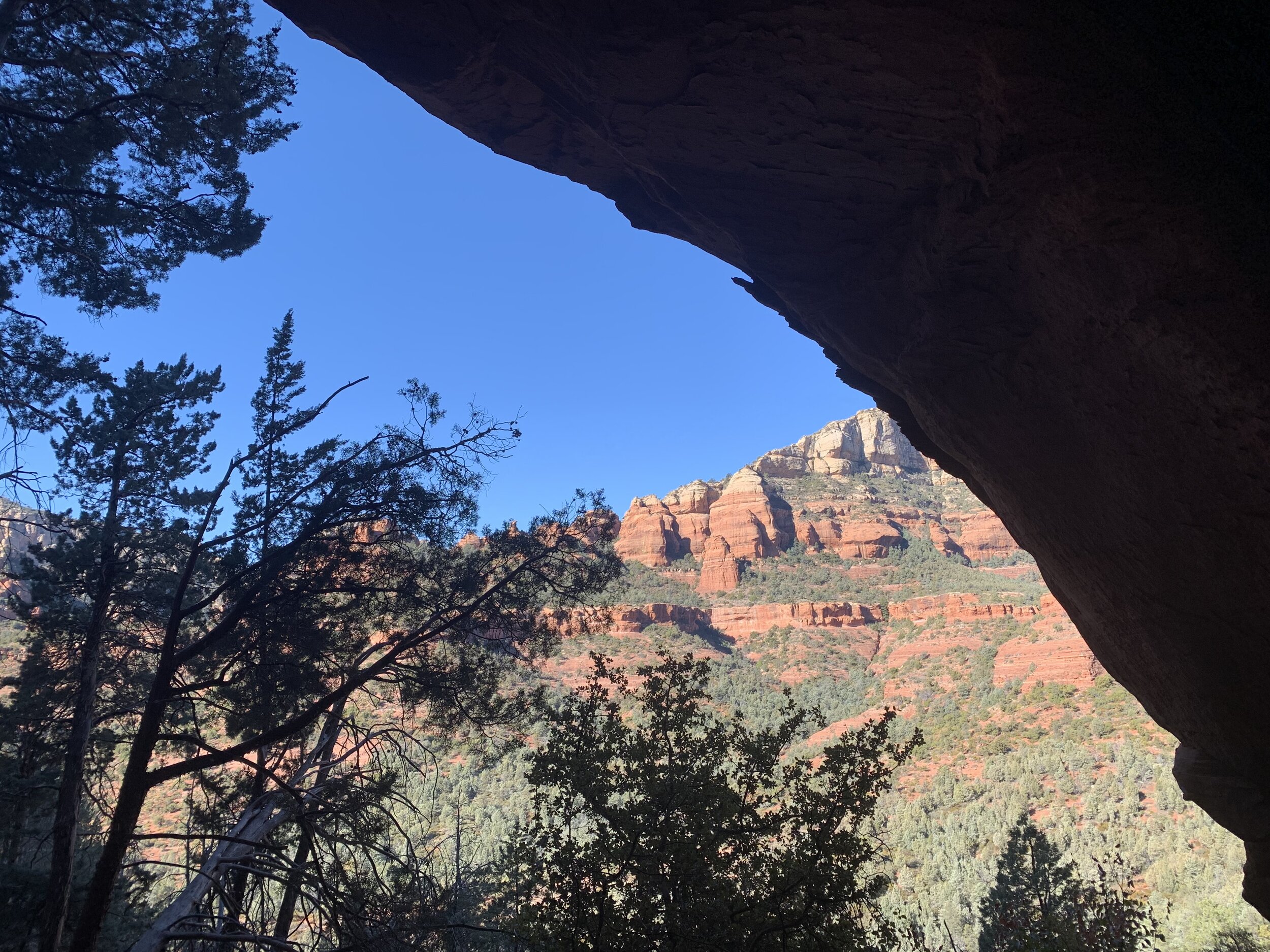Sedona, AZ is already a bucket list destination for hikers, photographers, spiritualists, and vanlifers, but what do you do once you get to Sedona? From the crowded trailheads, to the must-see Uptown Sedona, this is everything you need to do and see in Sedona, AZ.
What to know before you go…
The best time of year to visit Sedona, according to the weather, is between October and April, but the best time of year to visit according to the crowds is in the summer. Sedona is located in Northern Arizona, so it gets really hot in the summer, making it almost impossible to hike. In the winter, though, the crowds make it so that you need to choose a hike the night before, and get there first thing in the morning in order to find a parking spot that allows you to actually hike.
Most hikes in Sedona that aren’t affiliated with a state park are dog friendly, so feel free to bring your furry friend along!
On the Soldier’s Pass Trail
Visiting Sedona Vortexes
Sedona is a highly spiritual location full of energy Vortexes. These are natural spaces that are known to be super energetically charged, so much so that spiritual people can feel an energy shift while they are near them. You can recognize them by the swirly “vortex trees,” and they’re often found at the top of hikes like Cathedral Rock and Boynton Canyon.
At the Boynton Canyon Mesa
Hikes You Should Do
Sedona is known for hiking. This is the main thing we do whenever we visit Sedona, and there are so many trails, I definitely haven’t hiked even close to all of them. These are my favorites for first time visitors, though, so that you get the best experience.
Devils Bridge: 4 miles RT, easy-moderate. Devils Bridge takes you to the famous bridge arch formation, where you can get your perfect picture. The trail starts on a 4x4 dirt road, and eventually climbs to the viewpoint. Be careful on the bridge though—it’s narrow!
Devils Bridge Trail
Cathedral Rock: 1.2 miles RT, moderate-difficult. Cathedral Rock is a straight ascent of about 700 feet up to a beautiful viewpoint and spiritual vortex. This hike involves some heavy rock scrambling, and I highly recommend going in real hiking boots.
Solider’s Pass Trail and Seven Sacred Pools: as long as you want it to be, easy-moderate. The Seven Sacred Pools are an easy .25 miles from the trailhead, but if you want to go to Soldier’s Pass or the nearby caves, you’ll be doing about a 4 mile hike. We liked returning by walking the 4x4 road to avoid crowds going to the Seven Sacred Pools from Jordan Pond.
The Birthing Cave: 2 miles RT, moderate. This cave trail is easy until it reaches a steep ascent during the last .25 miles to the top. Traditionally, Hopi women came here to give birth, which is part of how it got its name (the other reason being its yonic shape). This is a very busy trail, so be prepared for crowds, and if you want a picture perfect scene for the ‘gram, get there early!
Cathedral Rock Trail
Healthy Hippie Bites
Sedona is a true hippie town full of amazing plant based food. These are my favorite spots for any meal, any time of day.
ChocolaTree: If you’re looking for amazing lunch or dinner food, ChocolaTree has you covered for vegetarian food. With options for any budget and diet, including raw vegan, you’ll love this organic eatery. My favorite thing to order at ChocolaTree is the Mushroom Fantasy.
Local Juicery: If you’re looking for a quick bite for lunch, Local Juicery is an amazing choice. From smoothies and juices, to easy on-the-go meals, this is the place to stop for any food you’re craving. My favorite thing to order here is the Avocado Toast.
Berry Devine: For anyone trying to cool off after a hike, Berry Devine has got you covered. This acai bowl place carries organic acai soft serve perfect for quenching any thirst. My favorite thing to order here is the Vortex Bowl with agave instead of honey and vegan granola.
At a Vortex just after sunrise
Visit Uptown
Shopping, believe it or not, is another thing you have to do in Sedona. But not just any shopping: crystal shopping. Sedona’s Uptown is their version of downtown, with shops after shops, and restaurants you won’t find anywhere else. Aside from the clothes and art galleries, you’ll find endless metaphysical shops in Uptown, and these are the perfect spots to buy crystals and other spiritual goodies during your trip. My favorite metaphysical shop in Uptown is called the Center For New Age, a shop where the spiritual energy is high, and you’ll find the most genuine crystals in town. They also have affordable incense, a spiritual bookshop, and a vortex at the back of the store.
Sedona, AZ is one of my favorite places in the US, and as a spiritualist, it’s a must see for anyone who connects to the energy of the universe. Even if you’re skeptical, no one can doubt that the hikes here are incredible, and there’s no chance that there is a more beautiful desert town in the Southwest.
Live in a van? Check out last year’s Vanlife Guide to Sedona at the link below!















































